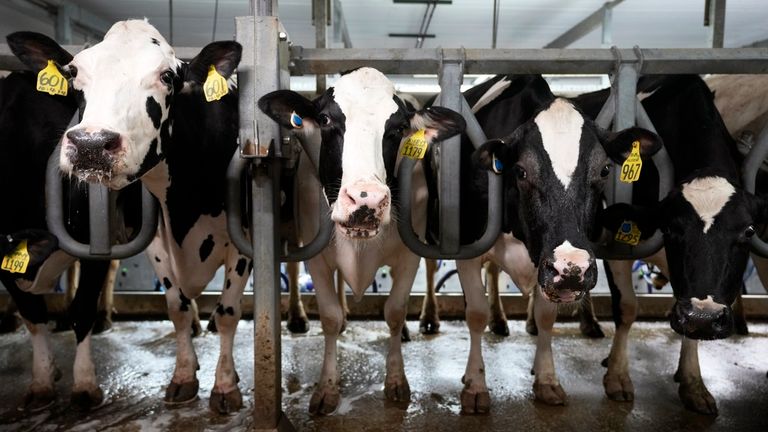Bird flu could be “evolving under the radar” because of failures to monitor and control the spread of the virus, a leading pandemic scientist has warned.
Dr Thomas Peacock, a specialist in animal-to-human spread of viruses at The Pirbright Institute, said H5N1 could be transmitting undetected in the US because of “months of missing data” that leaves researchers, vets and authorities in the dark.
The strain is currently spreading between US dairy cows after crossing over from wild birds earlier in the year.
Four workers on cattle farms have also become infected and the Centers for Disease Control (CDC) recently reported the first human case with no known contact with animals.
Symptoms have been mild in all the people infected so far.
Dr Peacock said: “What keeps scientists up at night is the possibility of unseen chains of transmission silently spreading through farm worker barracks, swine barns, or developing countries, evolving under the radar because testing criteria are narrow, government authorities are feared, or resources are thin.”
In the US there is only mandatory reporting of the disease in poultry, not mammals. The Department of Agriculture only requires testing on lactating cattle before they are moved across state borders.
H5N1 has also spread in fur farms in Europe and globally in wild marine mammals.
Writing in the journal Nature, Dr Peacock and colleagues at The Pirbright Institute say the prospect of the highly pathogenic strain of bird flu becoming permanently established in Europe and the Americas is a “turning point”.
New control measures are needed, including vaccination, he said. Some vaccines for poultry already exist, but they don’t prevent infection.
And new mRNA jabs may be needed “at scale” if the virus starts spreading in humans.
“The severity of a future H5N1 pandemic remains unclear,” he said.
“Recent human infections with H5N1 (in the United States) have a substantially lower case fatality rate compared to prior H5N1 outbreak in Asia, where half of people with reported infections died.
“The lack of severity in US cases may be due to infection through the eye, rather than through viral pneumonia in the lung.”
The CDC said the current public health risk is low, but it is closely monitoring people exposed to infected animals.



























